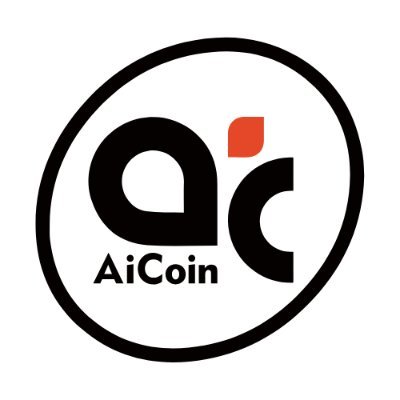
⚡️️ RESEARCH: The AI Agent sector is evolving from hype-driven speculation to value-driven sustainability.
Early AI agent projects thrived on narratives and ICO momentum, but as the sector matures, real adoption and revenue generation are becoming the key success metrics.
ElizaOS has emerged as a dominant AI framework, powering major Web3 integrations and surpassing $20B in market cap across its ecosystem. Its modular design and advanced reasoning capabilities make it a cornerstone for AI-driven applications.
Meanwhile, DeepSeek-R1 is redefining AI learning with pure reinforcement training, enabling agents to develop deeper reasoning and adaptability. This innovation enhances their role in automated trading, asset management, and DeFi interactions.
Projects like Hey Anon are leveraging AI to optimize DeFi strategies, introducing automated yield management and personalized portfolio adjustments. However, Figure 9 highlights a critical shift—simply launching AI agents is no longer enough. The market is demanding projects with sustainable revenue models, strong user adoption, and continuous innovation.
The AI agent space is transitioning from rapid experimentation to long-term viability. Only those that can generate real economic value and utility will thrive in this next phase.
[Research Marketing]

Aicoin-EN-Bitcoincom
5ساعة
Crypto’s 2025 Paradox: $610B Evaporates While Some Assets Defy Gravity With Triple-Digit Leaps
When the calendar turned to Jan. 1, 2025, the crypto economy shined at $3.27 trillion; today, it dims to $2.66 trillion, pared by over half a trillion dollars. Still, a modest 15 cryptocurrencies bucked the bearish tide, notching gains from a moderate 1% to FORM’s triple-digit 457.5% rise. The latter’s metamorphosis from $0.40 to $2.23 per unit crowns it the year’s unrivaled champion so far.
Four (FORM) has been 2025’s top gainer so far.
Meanwhile, onyxcoin (XCN) claims the silver medal, sprinting ahead by 343.5% as its price leapt from $0.00232 to $0.01029 per unit—a testament to market resilience in an otherwise frigid ecosystem. Claiming the bronze position, ultima (ULTIMA) now commands a valuation of $19,124 per token—a 173.6% escalation from its Jan. 1, 2025, price of $6,989.
Artemis Terminal data reveals stablecoins as 2025’s dominant force in an otherwise beleaguered cryptoverse, where most sectors languished in retreat from Jan. 1 valuations—though a select few sectors weathered the storm with comparative poise. Privacy coins, real-world asset (RWA) tokens, and exchange tokens somewhat defied the downtrend.
The year’s most precipitous tumbles include virtuals protocol (VIRTUAL), which briefly soared to a historic peak on Jan. 2 before cascading 88.1% from its $5.07 zenith to a meager $0.60. The meme token dogwifhat (WIF) spiraled 75.38%, thorchain (RUNE) relinquished 75.17%, and the meme coin brett (BRETT) hemorrhaged 74.13% since January’s opening bell.
Meme coins bore some of the harshest tolls in 2025: $76.60 billion—12.56% of the sector’s total $610 billion evaporation—vanished from their niche.
免责声明:本文章仅代表作者个人观点,不代表本平台的立场和观点。本文章仅供信息分享,不构成对任何人的任何投资建议。用户与作者之间的任何争议,与本平台无关。如网页中刊载的文章或图片涉及侵权,请提供相关的权利证明和身份证明发送邮件到support@aicoin.com,本平台相关工作人员将会进行核查。

Aicoin-EN-Bitcoincom
5ساعة
Mercuryo CEO: Crypto’s Arrival on the World Stage Won’t Be a ‘Eureka Moment’
Despite the early promises of blockchain technology to revolutionize global finance, cryptocurrency payments, while gaining traction, remain a small fraction of the overall market. Industry experts point to a combination of traditional financial inertia, volatility, and regulatory uncertainty as key factors hindering widespread adoption.
Petr Kozyakov, co-founder and CEO of Mercuryo, a payment infrastructure platform, highlighted these challenges, stating, “It boils down to a mix of inertia and uncertainty. Traditional finance has been around forever and people trust it, even if it’s slow and expensive. Cryptocurrency, especially stablecoins, are still comparatively new and that makes businesses and regulators nervous.”
Kozyakov’s assessment aligns with findings from recent reports analyzing the crypto payment landscape. For instance, marketer Linda Roper wrote in a blog post that resistance to change while normal it can be damaging when it stops a finance team from broadening its horizons and thinking outside the box. On the other hand, a recent survey by Bitget found that while users prefer crypto payments for speed, security concerns remain a key barrier.
Furthermore, the lack of a unified global regulatory framework creates a complex landscape for businesses operating in the crypto space.
However, proponents argue that the cryptocurrency payment landscape has evolved with significant advancements in security and scalability, which in turn pave the way for mainstream business adoption. Kozyakov, a veteran in the payments industry, concurs and adds that the crypto space has reached a crucial turning point, fueled by technological improvements and growing user confidence.
“We’re definitely getting there,” Kozyakov stated, addressing the question of whether mainstream businesses can now confidently accept crypto payments. He told Bitcoin.com News about the dramatic improvements in security, particularly in Web3 protocols and custody solutions. “Think about how much stronger [they] are compared to five years ago, when network outages—sometimes for hours at a time—were the norm and were tolerated.”
Kozyakov also pointed to the significant strides made in scalability, thanks to Layer 2 solutions and high-speed networks. However, he emphasized that the most crucial shift is user acceptance. “People are more comfortable with digital wallets, and as education spreads, the hesitation to engage with crypto fades.”
Regarding the argument from crypto advocates that cryptocurrency will become a significant backbone for payment systems in the future, the Mercuryo CEO said he remains bullish but admitted that regulatory gaps and technological mismatches are hurdles that must be overcome. Still, he noted that this transition will not be sudden, as some hope.
“In my opinion, there won’t be some Eureka moment when crypto arrives on the world stage. It’ll be subtle, just like every other tech revolution that’s gone before, from the Industrial Revolution to the dawn of the internet itself,” the CEO opined.
Turning to his experiences and challenges in promoting mainstream adoption of crypto payments, Kozyakov acknowledged that it has “been quite a ride.” He pointed to what he called a regulatory maze that his company has had to navigate, as each market has its own rules. He also highlighted the difficulty in building trust, particularly with merchants, given the industry’s evolving regulatory status.
To address these challenges, Kozyakov said Mercuryo has focused on establishing reliable collaborations and making crypto payments as seamless as traditional digital wallet transactions. Paying attention to users’ opinions and complaints is another way Mercuryo has worked to overcome these challenges.
“Thirdly, we listen to our users. Their feedback keeps us sharp and helps us tweak things to fit their real-world needs,” the CEO said.
Meanwhile, Kozyakov envisions a significant expansion of crypto payments by 2030, potentially capturing a double-digit percentage of global cross-border flows, particularly in remittances and e-commerce. He also predicts that stablecoins will lead this growth due to their practicality and stability, and that businesses will increasingly adopt crypto as it becomes more convenient.
He anticipates the rise of hybrid systems merging traditional finance (TradFi) with cryptocurrency, ultimately leading to seamless, intuitive blockchain-based transactions that may even be transparent to the end user, connecting millions globally.
免责声明:本文章仅代表作者个人观点,不代表本平台的立场和观点。本文章仅供信息分享,不构成对任何人的任何投资建议。用户与作者之间的任何争议,与本平台无关。如网页中刊载的文章或图片涉及侵权,请提供相关的权利证明和身份证明发送邮件到support@aicoin.com,本平台相关工作人员将会进行核查。


 أقل سعر
أقل سعر أعلى سعر
أعلى سعر 








































